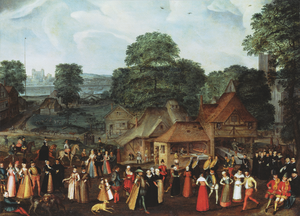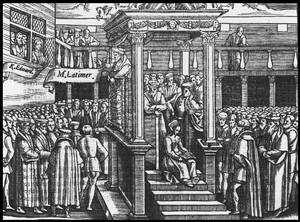Hierarchy in Elizabethan England had been so important that it is suggested to be the most vital element in order to understand the history of those days. Moreover, it is a well known fact that distinction between people of different social classes has been in existence since the very beginning of human life.
Elizabethan era had its own rules regarding the social structure prevalent in their society, and, people were bound to follow those rules. There were sumptuary laws imposed by the rulers to curb the expenditure of the people. These laws were related to food, clothing, furniture, and, jewellery.

The main objective of these laws was to ensure that a specific class structure is maintained. Sumptuary laws specified the colour and type of clothing that was required to be worn by individuals. This rule was made in order to make it easier to identify the rank and privilege of anyone.
Nobility Elizabethan Era
The highest in the hierarchy was the monarch. Elizabeth 1 led the Elizabethan era. She was the last and sixth ruler of Tudor. Queen in this era was considered to be God’s representation on Earth. She ruled for 45 years, and, it is because of her that Elizabethan era came to be known as the golden age in the British history.
The second rank in the hierarchy was held by the nobility. They were rich, powerful, and, owned large households. Within the nobility there was distinction between the old and new families. The old families were catholic, while, the new families were generally protestant. They were mostly the members of court and parliament.
Elizabethan Era Gentry
Gentry occupied the third rank in the hierarchy of Elizabethan era. They were considered to be the aristocrats who owned small parts of land and households, but, they possessed considerable wealth. Some of the individuals of gentry managed to own large properties, so, they were called gentlemen.

After the gentry; merchants occupied the next place on hierarchy in Elizabethan England. The real growth in society was considered to be in the merchants. This class also included tradesmen, shopkeepers and people who made products for public consumption. This group also probably include innkeepers. They were also known as citizens.
The fifth rank in the hierarchy was occupied by yeomen. Yeomen were the rural equivalent of citizens. They owned, or, used agricultural land for their living. Servants, labourers, and, peasants were the next in hierarchy. Next and, the last were the indigents.
They were the beggars and other people who, due to some or the other reason were unable to work.Thus, there were distinct classes existing in Elizabethan England. It can be concluded that the social structure of Elizabethan era was rigid, specified, and, clearly laid down.
More Info On- Elizabethan Social and Elizabethan Society, Elizabethan England Occupations